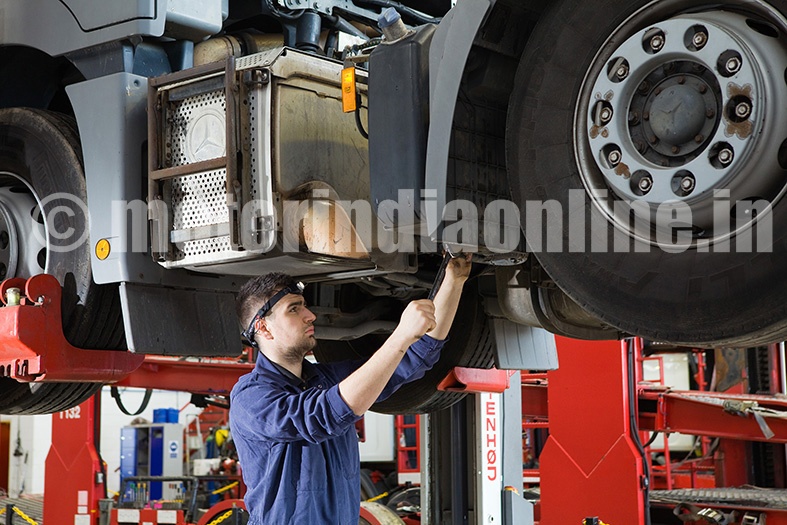Over the last decade, the Indian automotive components industry has scaled three times to $39 billion in 2015-16 while exports have grown even faster to $10.8 billion. While the component industry is expected to grow by 8-10 per cent in FY 2017-18 (source: ICRA), the automotive aftermarket industry is projected to touch Rs. 77,000 crores ($12.85 billion) by 2020.
With India tipped to become the third largest auto components market in the world by 2025, auto component makers are well positioned to benefit from the globalization of the sector that has also opened up opportunities in the aftermarket for any manufacturer, not only in India but globally, who can offer quality products at competitive costs.
Post-demonetization scenario
Talking about the present scenario, given the way it functions, including quite a bit of cash transactions, the automotive aftermarket was perhaps one sector which was tipped to go through a very challenging phase post-demonetization. While many stakeholders across the aftermarket value chain did face hurdles, there were others who had quite a positive experience following demonetization.
Mr. S. Muralidharan, President, Lucas Indian Service, says: “I don’t think demonetization has affected the aftermarket much; in fact, if at all it has had any effect, it has helped the organized sector and people like us. Demonetization or not, at the end of the day, vehicles moved, they broke down and parts were needed to be replaced – starters were needed, batteries had to be changed – and it was done. If you were an organized buyer or seller, you had good business. Demonetization is possibly the best thing that ever happened in making the aftermarket business more transparent, bringing down the spurious market and is also an obvious step towards digitalization.”
Mr. Dipen Makwana, Managing Director, TEXSPIN Bearings Ltd., opines: “We expect that the recent disruptions in the market post-demonetization would settle down soon and also hope some major forward-looking and path-breaking initiatives would be implemented by the Government so that we can catapult to the next level of our growth journey.”
Challenges and opportunities
As the automotive industry braces for some long-term changes including implementation of GST and the pan-India shift to BS-IV, the aftermarket will have its own set of challenges as a result of the changes. For companies that had anticipated the changes early and worked towards being future-ready, the challenges present opportunities for growth and market share expansion.
Leading aftermarket player Delphi sees the following challenges and opportunities in the aftermarket space: 1) Demonetization and digital usage – changing dynamics of trade payment. 2) GST – Introduction & Implementation. 3) Younger Parc of the AM – leading to growth of the market.
Delphi is engaged in strengthening its parts coverage in local aftermarket (target to cover 90% parc) with a wider distribution reach and penetration in 2017, as the company sees tremendous potential in this market. It plans to invest to be long-term player, and continue building and strengthening its portfolio to grow faster than the market, while also focusing and aligning India to its global aftermarket product offering, the company said in an official statement.
Sharing his views on GST and the emission norm changes, Mr. Muralidharan says: “GST is the big open question for the next six to twelve months. There is no doubt GST is a good thing for the country, but we are not able to figure out which way things will move – what the rate will be, how much of it will be passed on to us by the manufacturers, etc. As for the changing emission norms, it is something that will certainly help a more organized technology solution provider like us. It will have tremendous impact on the product portfolio of all companies without doubt and who adapts the best and fastest at the garage level will come out on top.”
Industry-readiness
The auto aftermarket sector has come off age over the years in handling changes and facing challenges. The auto industry has transformed over the last decade, be it the entry of the world’s best passenger car makers, the shift from a duopolistic to a fiercely competitive CV market, burgeoning growth in the two-wheeler space, apart from qualitative changes in terms of better performance, improve fuel efficiency, enhanced safety and comfort, adoption of technology, focus on connectivity, etc. Through all these changes, the aftermarket has kept pace in its own way, with companies coming up with suitable solutions in the form of compatible products, wider network reach, digital solutions and many other initiatives and innovations.
“From TEXSPIN’s prospective, we would remain focused in introducing and expanding our market presence with new products and new technology that is either already developed or in the pipeline as well as work on reinforcing and expanding our penetration in both domestic and global markets. In general, we feel efficient and effective channel management with a focus on differentiated service delivery may be a key growth-driver going ahead”, explains Mr. Makwana.
While challenges on the products and services front seem to be taken care of, the availability of skilled workforce might pose a bigger threat. Mr. Murali feels the industry is geared up and is putting in the right efforts to tackle the same: “In terms of availability of skilled resources, I think we are ready and are going through a positive change. The younger generation mechanics who have come up in the service industry might not know great English but can use technology in their regional language which is good enough. There have been various skill development initiatives from the Central Government, State Government, ITIs and other institutions and I believe it is going to be a continuous process.”
